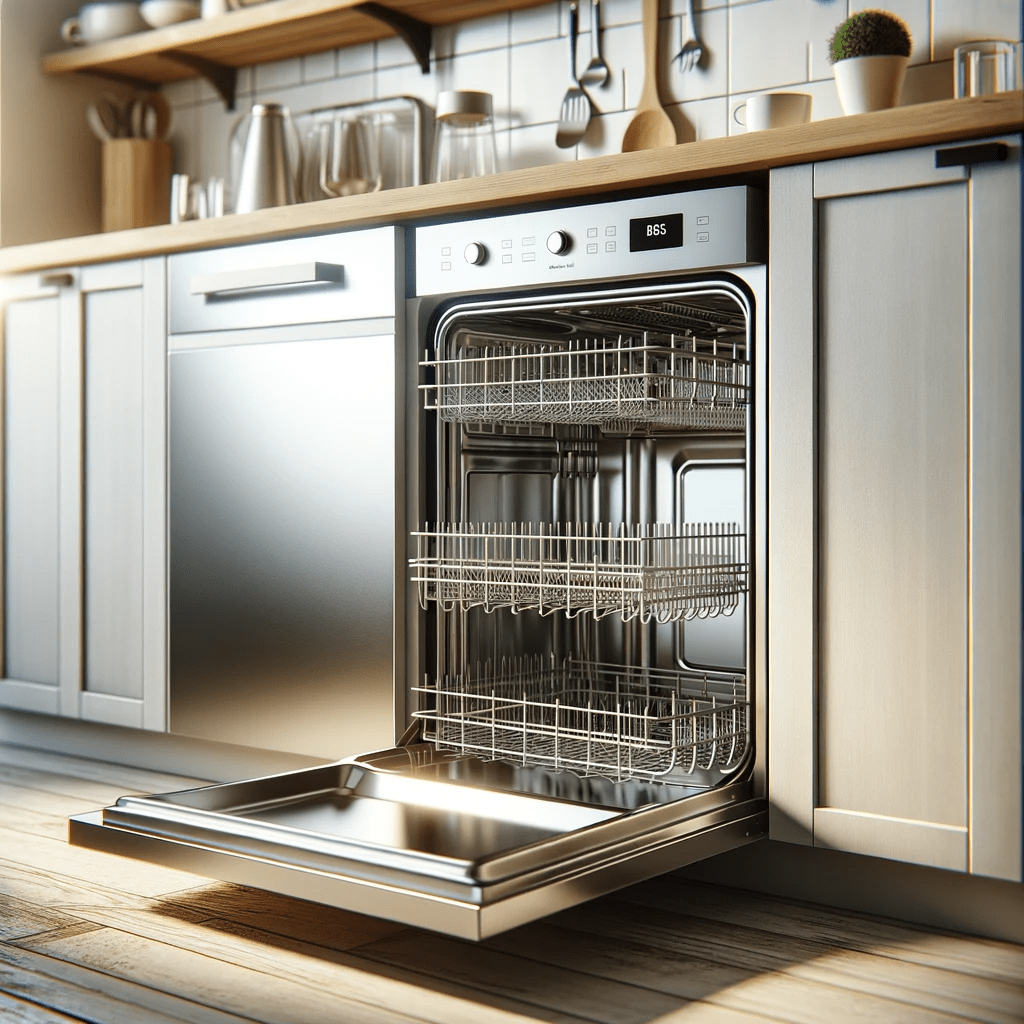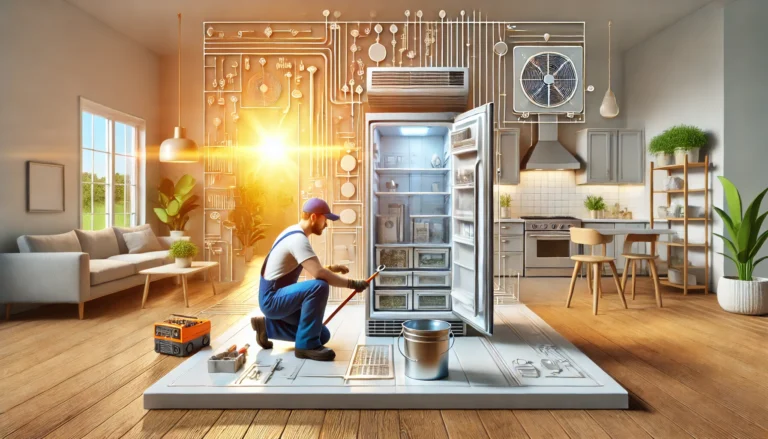Dishwashers have become an indispensable part of modern kitchens, not only saving time but also ensuring clean, hygienic dishwashing. However, like any appliance, they are not immune to malfunctions. Thus, understanding the basic anatomy of a dishwasher and familiarizing yourself with common repairs can help you diagnose issues and effectively decide whether to tackle a repair yourself or call a professional. In this blog post, we’ll methodically explore the key components of a dishwasher and delve into the common repairs associated with them.

Key Components of a Dishwasher
1. Control Panel and Timer
The control panel is your primary interface with the dishwasher, housing the timer, settings, and start button. Moreover, the timer plays a crucial role, controlling the duration of each cycle and ensuring the right actions occur at the appropriate times. Consequently, issues with the control panel or timer can lead to cycles not starting or stopping unexpectedly.
2. Water Inlet Valve
This valve plays a pivotal role as it controls the flow of water into the dishwasher. Consequently, if it fails, your dishwasher might not fill with water, or conversely, it might overfill. Therefore, a malfunctioning water inlet valve is a common reason for dishwasher repairs.
3. Spray Arms and Nozzles
Strategically located below and sometimes above the racks, the spray arms serve a vital function as they rotate and spray water onto the dishes. However, if these arms become clogged or damaged, this can unfortunately lead to poorly cleaned dishes.
4. Heating Element
The heating element, typically located at the bottom of the dishwasher, plays a dual role: it heats the water for washing and the air for drying. Consequently, if you notice that your dishes aren’t drying or the water isn’t heating up, it’s likely that the heating element might be the culprit.
5. Pump and Motor Assembly
The pump and motor, collaborating closely, work together to circulate water through the spray arms and also drain water out of the dishwasher. Therefore, if you encounter noise issues or a failure to drain water, these often indicate a problem with this essential assembly.
6. Filters and Drain
Filters play a crucial role as they trap food particles, thus preventing them from redepositing on dishes. However, a clogged filter can lead to poor cleaning performance and unpleasant odors. On the other hand, the drain, responsible for removing dirty water, can cause issues too; if it becomes clogged, water may pool at the bottom of the dishwasher.
7. Door Latch and Seals
The door latch is essential as it keeps the door securely closed during operation. Consequently, faulty latches can prevent the dishwasher from running effectively. Additionally, seals play a significant role in preventing water from leaking out of the unit, ensuring efficient and mess-free operation.
Common Repairs
Control Panel Issues
If the dishwasher isn’t responding to commands, it may be an electrical issue, requiring either a reset or replacement of the control panel.
Replacing the Water Inlet Valve
Symptoms of a faulty valve include a dishwasher that won’t fill or overfills. Replacing the valve is a common repair that can often be done without professional help.
Unclogging or Replacing Spray Arms
If dishes are coming out dirty, check and clean the spray arms. Replacement is straightforward if they are damaged.
Heating Element Replacement
A multimeter can test the heating element for continuity. Replacing it typically involves removing the dishwasher’s bottom panel.
Pump and Motor Assembly
Loud noises or water not draining properly may indicate issues with the pump or motor, often requiring professional assistance.
Cleaning Filters and Unclogging the Drain
Regularly cleaning the filters and checking the drain for clogs can prevent many dishwasher issues.
Repairing Door Latch and Seals
A malfunctioning latch or leaking door might need a new latch or seal replacement, which is usually a simple fix.
Conclusion
Understanding your dishwasher’s anatomy and common issues can empower you to perform basic repairs and maintenance, thereby saving time and money. Nonetheless, for more complex problems, it’s advisable to seek professional help in order to avoid further damage. Furthermore, regular maintenance tasks, such as cleaning filters and checking for clogs, are essential to ensure your dishwasher runs smoothly for years to come.
Remember, a well-maintained dishwasher is not just about convenience; it’s about ensuring the health and hygiene of your kitchenware. For more information about the dishwasher, you can contact us here


